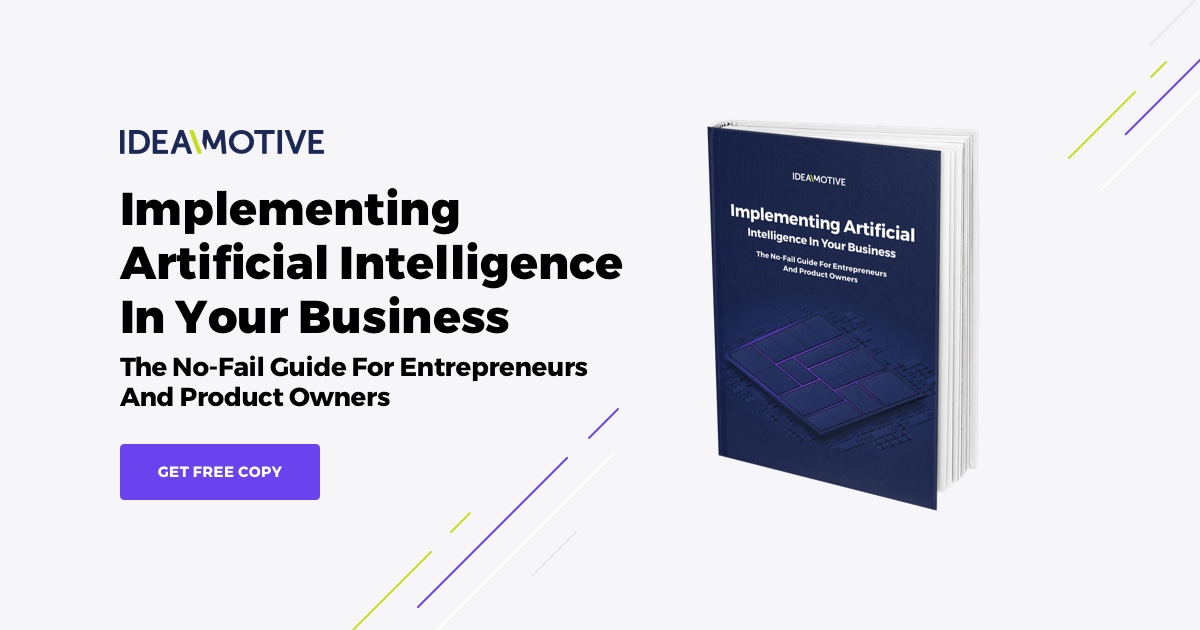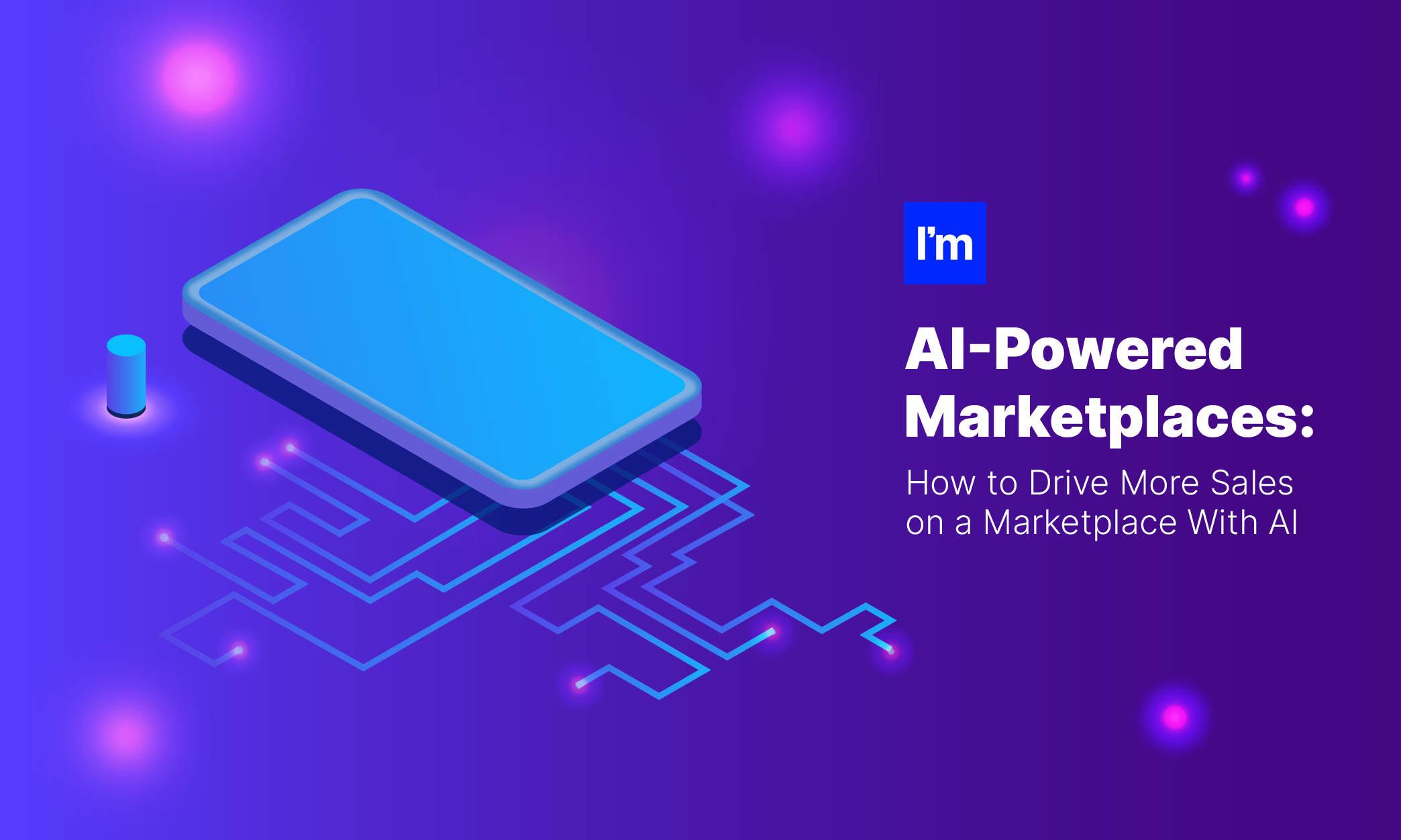Best AI Developers Interview Questions And Answers
Finding a professional AI software developer for your project may be a challenging task. Among the big number of candidates, you need to find those who would be able to utilize all the power of AI in order to take your project to the next level. That is why a hiring manager should thoroughly prepare the AI engineer interview questions that would help to fully evaluate the candidate’s previous experience, industry knowledge, and technical skills.
To help you make well-informed decisions, we’ve prepared a list of AI interview questions for different seniority levels. Feel free to use them in order to find top talents for your project.
Junior AI Developer Interview Questions
01
What are the different ways to classify AI?
There are many points of view, and based on the AI’s capacity to mimic human characteristics it’s divided into 3 categories:
- Weak artificial intelligence
- General Artificial Intelligence
- Strong artificial intelligence
Based on the functions that Artificial Intelligence performs it also can be divided into 4 following categories:
- Reactive Machines
- Limited Memory AI
- Theory of Mind AI
- Self-Aware AI
02
What is the difference between AI, deep learning, and machine learning?
Artificial intelligence is a technology that can be used to make a computer mimic human behavior.
Machine learning is a subset of artificial intelligence. It consists of algorithms and a method by which a computer can analyze large amounts of data and provide suggestions for solutions to specific problems based on artificial intelligence.
Deep learning is a subset of machine learning, with which a computer is capable of solving problems of a much greater level of complexity.
03
What is an intelligent agent?
An intelligent agent is a program that is capable of making decisions and providing services in various fields. It all depends on the environment, user input, and experiences. In most cases, such programs are used to collect information regularly, that is, according to a planned schedule, or at the request of the user in real-time. Bots can often be called intelligent agents.
04
Name five of the most popular languages used in AI?
- Python
- R
- Java
- C ++
- Prolog
05
What are neural networks in general?
Neural networks are a series of algorithms that mimic the operations performed by the human brain. They are used to recognize relationships between large amounts of data. Neural connections are often used in financial services programs, from predicting market research to fraud detection and risk assessment.
06
Name the applications of supervised machine learning in modern businesses?
- Email Spam Detection
- Healthcare Diagnosis
- Sentiment Analysis
- Fraud detection
07
What is the difference between a linked list and an array?
An array is an ordered collection of objects. It stipulates that each item is the same size, unlike a linked list.
A linked list is a series of pointer objects. These pointers indicate the sequence in which objects should be processed.
08
What are the types of keys in a relational database?
- Super key
- Primary key
- Candidate key
- Alternate key
- Foreign key
- Compound key
- Composite key
- Surrogate key
09
What is an A * Algorithm search method?
A * Algorithm is a kind of search algorithm that finds the shortest path between the start and end states. A * Algorithms are widely used in various programs such as maps. Such programs use this algorithm to determine the shortest distance between the starting point and the final destination.
10
What is Tensorflow used for?
TensorFlow is an open-source software library that was developed for use in machine learning and neural networks research. It’s mainly used for data-flow programming. It also significantly simplifies the process of incorporating certain AI features such as natural language process and speech recognition into applications.
Mid AI Developer Interview Questions
01
What is the difference between a generative and discriminative model?
A generative model is a model that studies categories of data, while a discriminative model simply finds differences between different categories of data. In most cases, discriminative models are superior to generative models for classification problems.
02
How is a decision tree pruned?
That is a process that typically occurs in a decision tree when branches with weak foresight are removed to reduce model weight and improve the prediction accuracy of the decision tree model. Such a reduction can occur in different ways, both from top to bottom and from bottom to top. During this process, approaches such as reducing the number of errors and reducing the complexity are used.
03
What is a Bayesian network and why is it important in AI?
A Bayesian network in AI is a probabilistic graphical model for showing relationships among a set of variables. It’s important because it mimics the activity of a human brain in processing variables and consists of 2 sections as a Directed Acyclic Graph and a Table of conditional probabilities.
04
What is a hash table?
A Hash table is a data structure with which an associative array is created. Key is mapped to values through the use of a hash function. These data structures are typically used for tasks such as indexing a database.
05
What is semi-supervised Machine Learning?
Supervised learning is based on completely labeled data. On the other hand, unsupervised learning doesn’t use any training data at all.
Semi-supervised Machine Learning is the mix of these two approaches and is based on training data consisting of a small amount of labeled data and a massive amount of unlabeled data.
06
What is the difference between K-means and KNN algorithms?
K-Means is an unsupervised clustering algorithm. Its purpose is to identify k number of centroids and allocate every data point to the nearest cluster while keeping the centroids as small as possible.
The KNN (K-Nearest Neighbors) is a supervised classification algorithm. Its purpose is to classify an unlabeled observation based on its K surrounding neighbors.
07
How do you ensure you're not overfitting with a model?
There are three traditional methods for avoiding overfitting:
- Simplify your model. That can be done by taking into account fewer variables and parameters. This way you can get rid of some of the noise in the training data.
- Use cross-validation techniques. One of the best cross-validation techniques is the k-folds cross-validation method.
- Use a variety of regularization techniques. One of the most common is the LASSO method, which penalizes specific model parameters if they're likely to cause overfitting.
08
What cross-validation technique would you use on a time series dataset?
Please note that time series are not randomly distributed data. They are sorted alphabetically. If the pattern showed itself not at the beginning, but in a later period, then your model can still catch it. For this to succeed, you need straight chaining. With it, you can model preliminary data and look at the data in perspective.
Fold 1: training [1], test [2]
Fold 2: training [1 2], test [3]
Fold 3: training [1 2 3], test [4]
Fold 4: training [1 2 3 4], test [5]
Fold 5: training [1 2 3 4 5], test [6]
09
What is an F1 score? How can it be used?
The F1 score is a measure of the model's performance. For this value, track the accuracy and recall of a model. The scale starts at 0 and ends at 1, where the results are around 0 - bad, and the results, 1 - are the best. F1 scores can be used in classification tests.
10
Where ensemble techniques can be useful?
Ensemble techniques use combinations of different algorithms to optimize more accurate predictions. This technique usually helps to reduce overfitting in models as well as make them more stable.
Senior AI Developer Interview Questions
01
What is a Confusion Matrix? How does it work?
A confusion matrix is a specific table that is commonly used to measure the performance of an algorithm. It is mostly used in supervised learning; in unsupervised learning, it's called the matching matrix.
This matrix has two parameters:
- Actual
- Predicted
02
What are the stages of building a model in machine learning?
In total, there are three stages of building a machine learning model:
- Building the model: First, you need to choose an algorithm for the model and train it, observing the requirements.
- Testing the model: You need to check in detail how accurately the model works using test data.
- Application of the model: You need to make all the necessary changes and finalize the model after testing, and only then use the final model for projects in real-time.
03
What is a Random Forest?
A Random Forest (also known as Random Decision Forests) is a supervised machine learning algorithm that is used for classification, regression, and other tasks. It operates by creating multiple decision trees during the training phase and makes the final decision based on the decision of the majority of the trees.
04
Which machine learning algorithm to choose for different problems?
In general, there is no specific rule for choosing an algorithm for a particular task, but to choose the best algorithm, you can follow the following rules:
You need to test and validate various algorithms to ensure that the algorithm is best suited to solve your problem.
If the training dataset is small, it is better to use low variance and high bias models.
If, on the contrary, the training dataset is large, then it is better to use models with high variance and small bias.
05
What are precision and recall?
Precision is the ratio of several events you can correctly recall to the total number of events you recall.
Precision = (True Positive) / (True Positive + False Positive)
A recall is the ratio of the number of events you can recall to the total number of events.
Recall = (True Positive) / (True Positive + False Negative)
06
List the methods of reducing dimensionality?
There are several ways to reduce dimensionality. You can combine features with feature engineering, removing collinear features, or using algorithmic dimensionality reduction.
07
What are bias and variance?
Bias is a machine learning model when the predicted values are further from the actual values. Low bias indicates a model where the prediction values are very close to the actual ones.
Variance is the amount by which the model will change when trained with different training data. For an ideal model, the variance should be minimal.
08
What are unsupervised machine learning techniques?
- Clustering
- Association
09
What is the difference between inductive machine learning and deductive machine learning?
Inductive Learning observes and analyzes various cases, which are based on certain principles, to draw certain conclusions at the end.
Deductive Learning concludes experiences
10
When to use classification and regression?
Classification is used when your goal is categorical. Regression is used when the variable is continuous. Both classification and regression belong to categories of machine learning algorithms that can be controlled.

There are hundreds of battle-proven software development experts in our Talent Network.
Are you an AI developer looking for amazing projects? Join as a Talent





